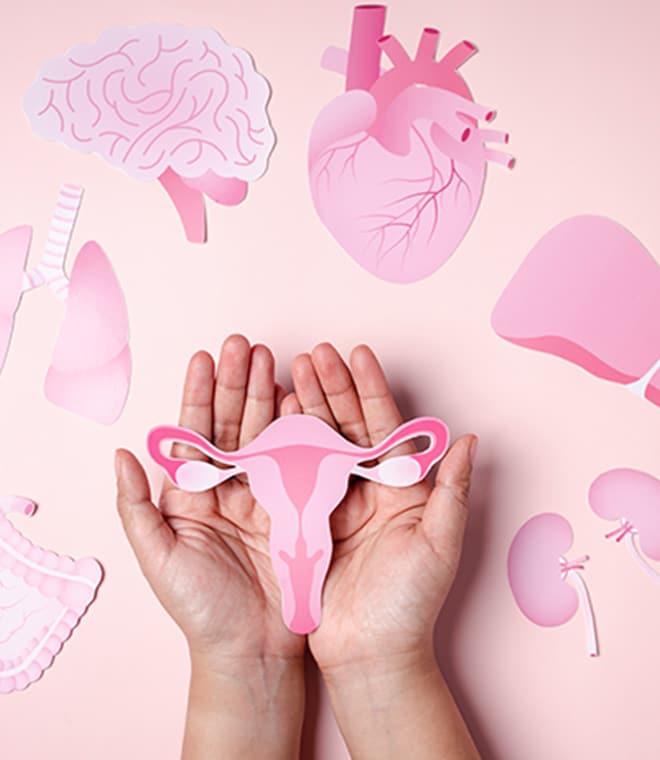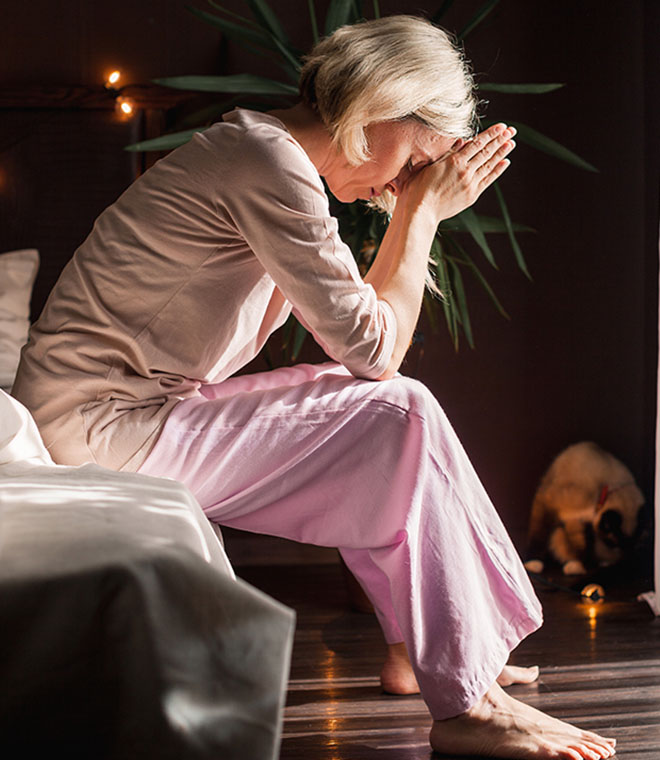Health
What causes bleeding after menopause?
By Patricia Ann Convery, MD Fellow, American College of Obstetrics and Gynecology May 06, 2025 • 7 min
Some women over the age of 55 may experience postmenopausal bleeding. In some cases, bleeding or spotting after menopause may be due to benign causes. However, postmenopausal bleeding may indicate a more serious condition, which is why you should see your healthcare provider for this symptom. More than 90% of women who have endometrial cancer experience bleeding.
Can periods restart after menopause?
No, your periods can’t restart once you have gone through menopause. Menopause has occurred once you have gone without a period for 12 months in a row and there is no other medical cause for your lack of menstruation. If you’ve gone through menopause, your ovaries no longer release eggs and you won’t get periods anymore. However, menstruation may start and stop during perimenopause, the period of years leading up to menopause.
Potential causes for vaginal bleeding after menopause
Due to changes in hormone levels, your body goes through many changes during the stages of menopause. Vaginal bleeding after menopause is often due to these changes. The following are some reasons why you might experience postmenopausal bleeding:
1. Vaginal atrophy: After menopause, the vaginal walls and/or the lining of the uterus may thin. This is known as atrophy. When atrophy occurs, the lining becomes more delicate and prone to tears and lacerations, especially during sexual intercourse. Vaginal dryness can worsen the problem and make injuries more likely. Just as a wound to the skin elsewhere on your body can cause bleeding, these lacerations can result in bleeding or spotting.
If vaginal atrophy is the cause of postmenopausal bleeding, your healthcare provider may prescribe topical estrogen creams, suppositories, rings or tablets. Using vaginal moisturizers and water-based lubricants may also help.
2. Hormone therapy: In some cases, hormone replacement therapy and other types of hormone therapies may cause vaginal bleeding after menopause as a side effect. If you’re taking a medication that can lead to postmenopausal bleeding, your healthcare provider may perform other tests to rule out any other potential causes.
3. Infections: Sexually transmitted infections (STIs) and other infections of the cervix or uterine lining can cause the tissue to become inflamed. This can lead to postmenopausal bleeding. For infections caused by bacteria, medical providers typically prescribe oral antibiotics.
4. Bleeding from other areas: In some cases, bleeding that originates from other areas may be mistaken for spotting after menopause. Hemorrhoids, or swollen veins in the rectum or around the anus, can cause bright red bleeding when you have a bowel movement or wipe yourself after going to the bathroom. It’s possible to mistake the blood for vaginal bleeding.
Blood in the urine due to a urinary tract infection or kidney stones may also be confused with vaginal bleeding. Even if you suspect the blood may be coming from somewhere else, let your healthcare provider know about your symptoms since conditions such as urinary tract infections, kidney stones and severe hemorrhoids may require treatment.
Uterine (endometrial) polyps: Growths called “polyps” can develop along the inner wall of the uterus. The stalks of the polyps can irritate and inflame the surrounding tissue, leading to postmenopausal bleeding. Many uterine polyps are benign. However, the growths can become cancerous. As a result, healthcare providers may recommend surgery to remove uterine polyps that are causing vaginal bleeding after menopause.
5. Endometrial hyperplasia: About 133 out of 100,000 women develop endometrial hyperplasia, a rare precancerous condition where the lining of the uterus gets thicker. One of the biggest risk factors for endometrial hyperplasia in menopausal women is having too much estrogen without enough progesterone. This causes the uterine lining to continue to grow and thicken. In menopause, the ovaries have stopped making estrogen. However, the excess fat cells in women who are obese can create a significant source of endogenous estrogen.
Diabetes, early menses, irregular menses and PCOS (polycystic ovary syndrome) are some additional risk factors for endometrial hyperplasia. People with endometrial hyperplasia may experience postmenopausal bleeding due to the changes in the uterine lining.
There are different levels of severity of endometrial hyperplasia. Milder levels of hyperplasia may be treated with oral progestin therapy, a progestin IUD or hormonal injections. More severe cases of endometrial hyperplasia are treated with hysterectomy.
6. Cancer: Cancers of the uterus, vagina and cervix can all cause postmenopausal bleeding. Although postmenopausal bleeding may not be serious, it’s important to report this symptom to your healthcare provider for possible early detection of malignancy. Early detection and treatment is essential for improved outcomes of cancer.
Don’t ignore postmenopausal bleeding
If you experience any bleeding or spotting after menopause, let your healthcare provider know as soon as possible. Even if you only see a small amount of blood or it happens just once, it’s better to get an evaluation from your provider than to ignore the issue or wait and see.
Your provider may perform a pelvic exam and order blood work, a pap smear, and/or imaging tests as needed to determine the cause of postmenopausal bleeding. You may also need an endometrial biopsy or cervical biopsy, both minor in-office procedures. You can then discuss treatment options to address vaginal bleeding after menopause.
Updated by Julie McDaniel, MSN, RN, CRNI, May 2025.
Sources:
- https://www.acog.org/womens-health/experts-and-stories/the-latest/bleeding-after-menopause-could-be-a-problem-heres-what-to-know
- https://www.acog.org/womens-health/faqs/perimenopausal-bleeding-and-bleeding-after-menopause
- https://www.uptodate.com/contents/evaluation-of-hematuria-in-adults
- https://www.uptodate.com/contents/approach-to-the-patient-with-postmenopausal-uterine-bleeding
- https://www.merckmanuals.com/professional/gynecology-and-obstetrics/vaginitis-cervicitis-and-pelvic-inflammatory-disease/cervicitis#Treatment_v8374857
- https://familydoctor.org/condition/abnormal-uterine-bleeding/
- https://www.ncbi.nlm.nih.gov/books/NBK562188/
- https://www.uptodate.com/contents/genitourinary-syndrome-of-menopause-vulvovaginal-atrophy-clinical-manifestations-and-diagnosis
- https://www.uptodate.com/contents/genitourinary-syndrome-of-menopause-vulvovaginal-atrophy-treatment
- https://www.merckmanuals.com/professional/gynecology-and-obstetrics/symptoms-of-gynecologic-disorders/female-pelvic-mass
- https://www.uptodate.com/contents/endometrial-polyps
- https://familydoctor.org/condition/endometrial-hyperplasia/
- https://www.acog.org/womens-health/faqs/endometrial-hyperplasia
- https://my.clevelandclinic.org/health/diseases/16569-atypical-endometrial-hyperplasia
- https://www.merckmanuals.com/professional/gastrointestinal-disorders/anorectal-disorders/hemorrhoids#Diagnosis_v895164
- https://www.uptodate.com/contents/endometrial-polyps
- https://www.ncbi.nlm.nih.gov/books/NBK560693/
- https://pmc.ncbi.nlm.nih.gov/articles/PMC6142981/




